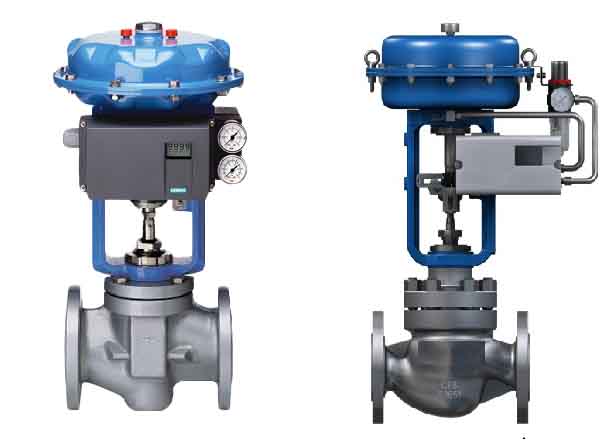
Description
Control Valves are most Critical in any Process Control Loop which are tailor made, designed and optimized for your Specific Process.
Our Precise sizing and selection of Right Type of Valves will bring you Higher Profitability,Reliability and Productivity.
Pneumatically / Electrically actuated Control Valves in Two way,3Way design suitable for Steam,Air, Water and various other Process fluids and Gases.
Compact and easy to Install and Maintain with multispring actuators.
Valve sizes from 1/2"to 18".
Ratings : ANSI 150# TO 2500#
End Connections : Flanged,Screwed,Butt Weld,Socket weld.
Body/Bonnet/Trim Materials : WCB,Stainless Steel,Monel,Alloy 20,Duplex,Hast B/C,PFA Lined etc.
Special Control Valves : Micro Flow Trim,Heating Jacketed,Bellow Sealed,Cryogenic Service valves, Food Grade valves,Diaphragm Control valves.
Valves with Exotic materials for Chlorine ,Acids and similar services.
Severe Service valves required in Power Plants, Steel, Oil and Gas industries.
Accessoreis : Smart/HART Positioner,Electro Pneumatic Positioner,Limit Switches,Solenoid valve,Air Filter regulator,Handwheel,Air Lock,Volume Booster.
Smart valve positioners are advanced devices used in industrial control systems to precisely control the position of a control valve in response to control signals from a process controller. They enhance the performance and functionality of control valves by providing intelligent features and communication capabilities. Here are the key features and benefits of smart valve positioners:
Position Control : Smart valve positioners accurately control the position of control valves, ensuring that the valve moves to the desired position based on the control signals received from the process controller. They can provide precise positioning, allowing for improved control accuracy and stability in process control loops.
Communication Capabilities : Smart positioners are equipped with communication interfaces, such as HART (Highway Addressable Remote Transducer) or Foundation Fieldbus protocols. These interfaces enable bi-directional communication between the positioner and the control system, allowing for remote configuration, diagnostics, and monitoring of the valve performance.
Diagnostics and Condition Monitoring : Smart positioners offer diagnostic capabilities to monitor the health and performance of the control valve and positioner assembly. They can detect issues such as valve stiction, air supply problems, or mechanical wear, and provide diagnostic alerts or alarms. This enables proactive maintenance and helps prevent costly equipment failures or process disruptions.
Valve Signature Analysis : Some advanced smart positioners utilize valve signature analysis techniques to evaluate the condition of the control valve and identify potential problems. By analyzing the valve's response to control signals, these positioners can detect issues like excessive friction, valve seat leakage, or improper valve sizing, allowing for predictive maintenance and optimization of valve performance.
Calibration and Setup Flexibility : Smart positioners often provide features for easy calibration and setup. They may include auto-calibration routines that simplify the initial commissioning process. Configuration parameters can be adjusted remotely, saving time and effort in field installations or adjustments.
Performance Enhancement : Smart positioners can enhance the performance of control valves by compensating for dynamic process variations or disturbances. They can incorporate advanced control algorithms, such as PID (Proportional-Integral-Derivative), to optimize valve response, reduce overshoot, and improve overall control system performance.
Integration with Asset Management Systems : Smart positioners can integrate with asset management systems, allowing for centralized monitoring and management of control valves across a plant or facility. They can provide real-time valve status, maintenance history, and performance data, supporting predictive maintenance strategies and improving overall plant efficiency.
